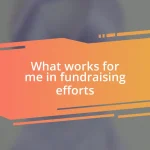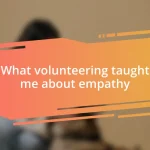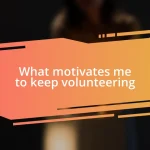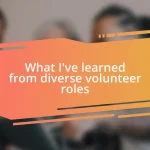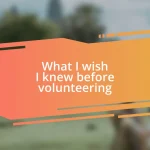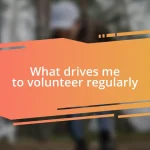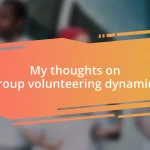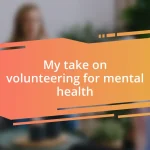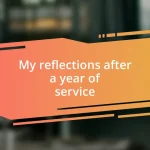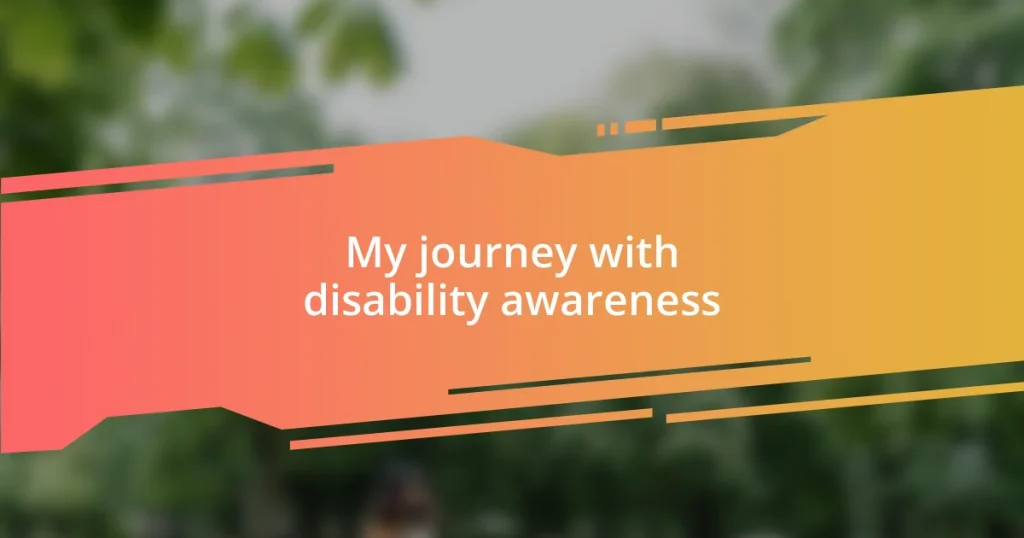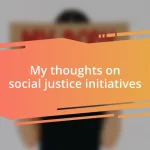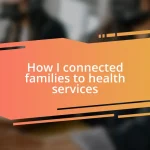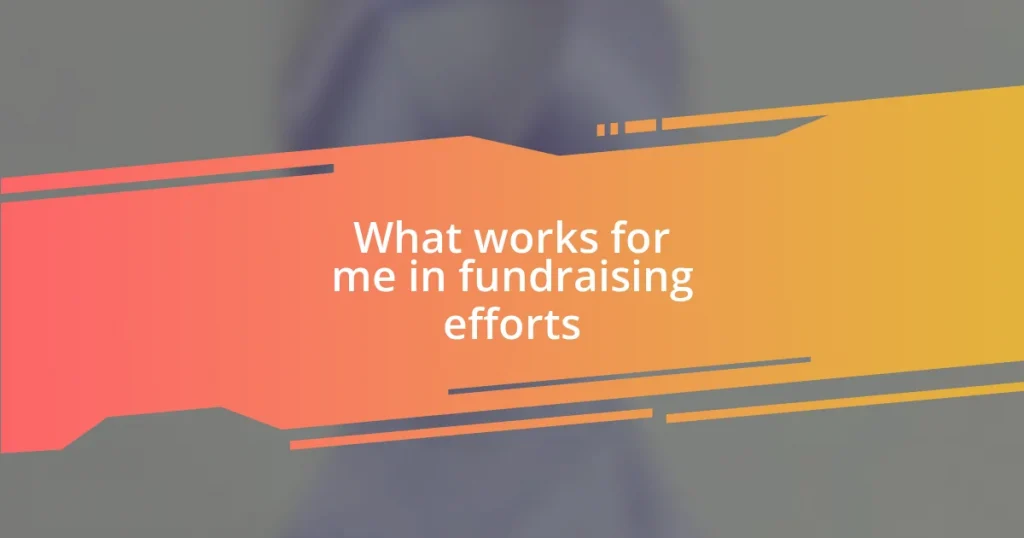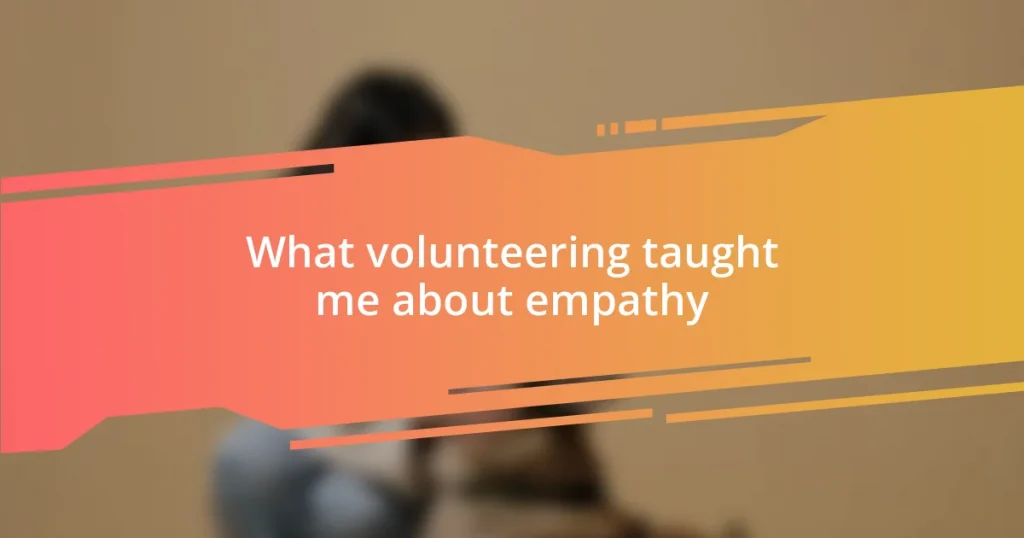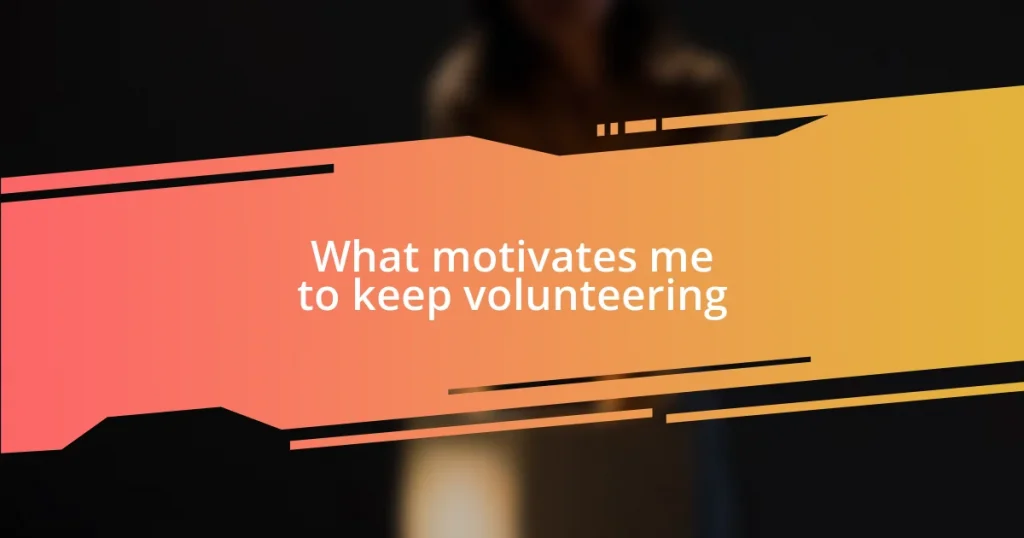Key takeaways:
- Disability awareness involves recognizing individuality and fostering empathy, rather than just understanding conditions or limitations.
- Personal connections and shared stories can significantly enhance understanding and advocacy for accessibility and inclusivity.
- Engaging in community dialogue, educational workshops, and creative events can effectively spread awareness and support individuals with disabilities.
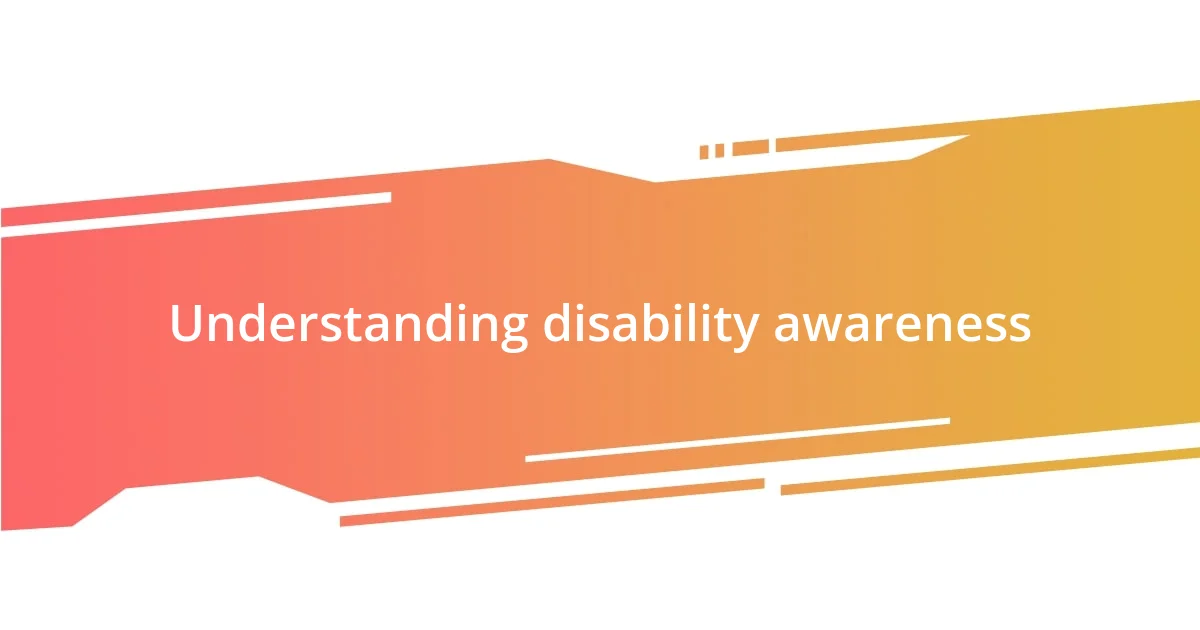
Understanding disability awareness
Disability awareness goes beyond just understanding physical or mental conditions; it’s about recognizing the individuality of each person. I remember meeting a young woman at a disability advocacy event who shared her frustration about being labeled merely by her wheelchair. This sparked a thought – how often do we overlook the rich stories behind each person’s experience?
In my experience, truly grasping disability awareness means fostering empathy and connection. I once volunteered at a community center where a visually impaired friend taught me how to navigate the world without sight. His insights transformed my understanding of reliance; it made me question how small adaptations in our environments might empower others. Isn’t it fascinating how a shift in perspective can lead to greater acceptance?
Furthermore, understanding disability awareness requires us to embrace inclusivity. Think about it: how often have you considered the accessibility of your favorite public spaces? I was genuinely surprised to find that many beloved venues in my city were far from accommodating. It made me realize that awareness is just the first step; advocating for change can truly make a difference in the lives of those with disabilities.
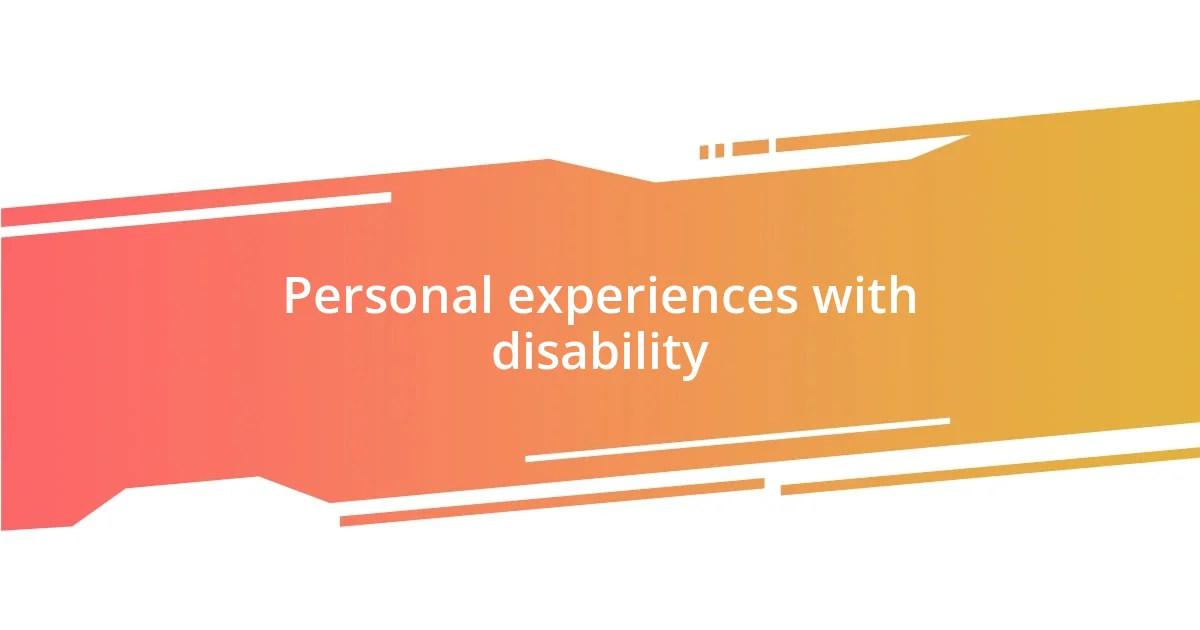
Personal experiences with disability
During my time volunteering at a local disability support group, I formed a close friendship with someone who has autism. I remember vividly our first meeting. He was anxious and unsure, but as we talked, I saw his passion for art emerge. It made me realize that while disabilities can create challenges, they can also uncover incredible talents and strengths. This dynamic has stayed with me, reminding me that each person carries a world of experiences waiting to be discovered.
Reflecting on my own encounters, I have noted how disability awareness has reshaped my interactions. Some key feelings and thoughts that arise include:
- A deeper appreciation for the diverse talents individuals possess beyond their disabilities.
- A recognition of the everyday barriers they face, which are often invisible to those of us without disabilities.
- The powerful impact of shared personal stories in fostering understanding and empathy among us all.
These moments remind me of the importance of dialogue and connection in bridging gaps of awareness.
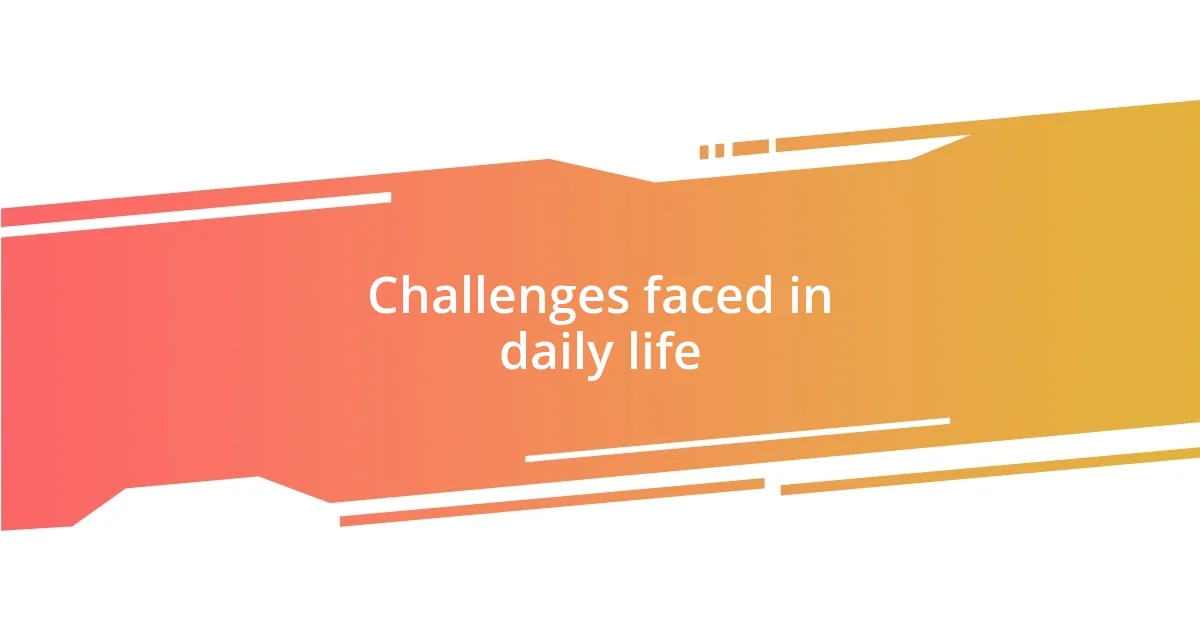
Challenges faced in daily life
Navigating daily life with a disability often unveils challenges that many might overlook. For example, I once accompanied a friend who uses a wheelchair to a popular café. When we arrived, I realized that the entrance was not accessible. Watching my friend struggle while the café staff hesitated to help was a poignant reminder of the physical barriers that persist in everyday settings. It was an upsetting experience that underscored the need for lasting changes in how public spaces are designed.
Social interactions might seem simple, but for those with disabilities, they can be fraught with anxiety. I recall attending a social event where my hearing-impaired friend felt out of place amidst a crowd engaged in loud conversations. Despite his attempts to join in, he often felt isolated, as many were unaware of the importance of clear communication—such as facing him while speaking or using visual cues. This left me questioning how we, as a society, can make our interactions more inclusive and welcoming.
Emotional challenges can be just as significant. A colleague of mine, who has a visible disability, shared how often people underestimate his abilities simply based on his appearance. He often faces microaggressions that chip away at his confidence. It reminded me of the importance of challenging our own biases and fostering an environment where everyone feels valued, regardless of their circumstances.
| Challenge | Example |
|---|---|
| Physical Accessibility | Café entrance not wheelchair accessible |
| Social Isolation | Difficulties in conversations for hearing-impaired individuals |
| Emotional Stress | Underestimation of abilities due to visible disability |
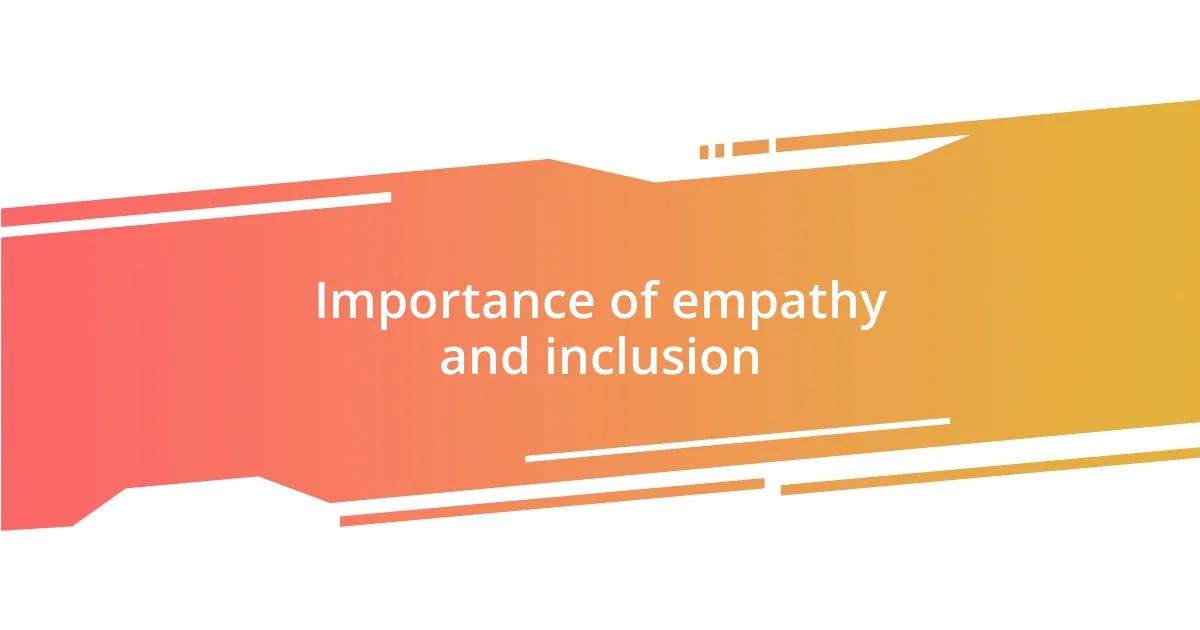
Importance of empathy and inclusion
Empathy and inclusion are like the glue that holds our communities together, especially when it comes to understanding disabilities. I’ve often felt that when we take the time to genuinely connect with individuals facing challenges, we unlock a richer perspective on life. For instance, I once reached out to participate in a workshop focused on disability advocacy. Hearing personal stories from people with disabilities made me realize just how much empathy can drive change—suddenly, their struggles became not just statistics, but real human experiences I could relate to.
Inclusion goes hand-in-hand with empathy, illuminating how critical it is to ensure that everyone has a voice in our society. I think about how often we discuss inclusivity in theoretical terms, yet fail to implement it in everyday scenarios. I remember sitting in a meeting where a colleague with a disability was often overlooked while contributing ideas. It left me pondering—how many unique perspectives do we miss simply because we don’t actively seek to include everyone in conversations?
Creating a culture of empathy requires us to challenge the status quo and break down barriers—both physical and emotional. Reflecting on my own journey, I’ve learned that simple gestures, like patiently explaining something to someone who might need it or rearranging seating for better access, can foster an environment where everyone feels valued. It’s a continuous journey where I believe our collective efforts can plant seeds of change, nurturing a more inclusive future for everyone.
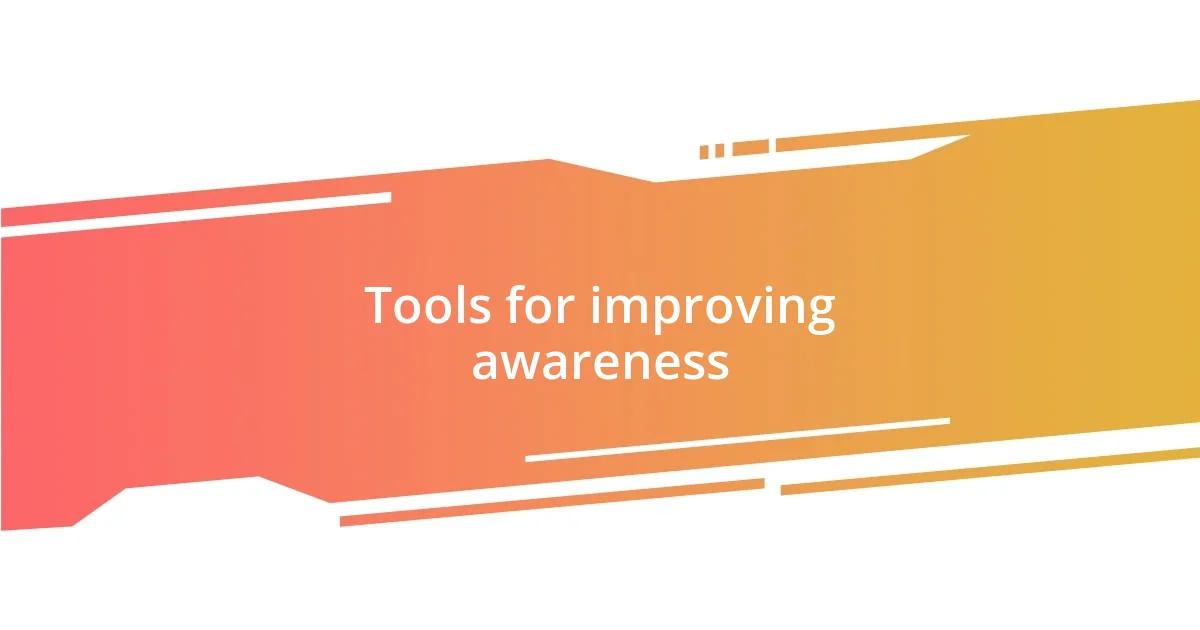
Tools for improving awareness
One of the most effective tools I’ve found for improving disability awareness is engaging in open dialogues. Last year, I facilitated a discussion group at my local community center. As diverse voices shared their experiences, listeners were often moved to connect personally with issues they hadn’t previously understood. These deep conversations turned abstract struggles into relatable stories, reminding us that awareness isn’t just about knowledge; it’s about connection, too.
Another impactful tool has been the use of social media campaigns. I shared my own experiences on platforms like Instagram, where simple posts about everyday challenges could spark conversations among my friends and followers. I was pleasantly surprised by how many people reached out, sharing their own stories or asking questions. It reinforced the idea that awareness can spread quickly when we create spaces for dialogue and share personal narratives openly.
Lastly, educational workshops can serve as powerful instruments for fostering understanding. When I attended a seminar aimed at local businesses, the real-life testimonials from individuals with disabilities highlighted the importance of accessibility in the workplace. I couldn’t help but think about the positive ripple effects such workshops create—raising awareness while also encouraging businesses to rethink their policies. Isn’t it incredible how a few hours of impactful learning can catalyze meaningful change in our communities?
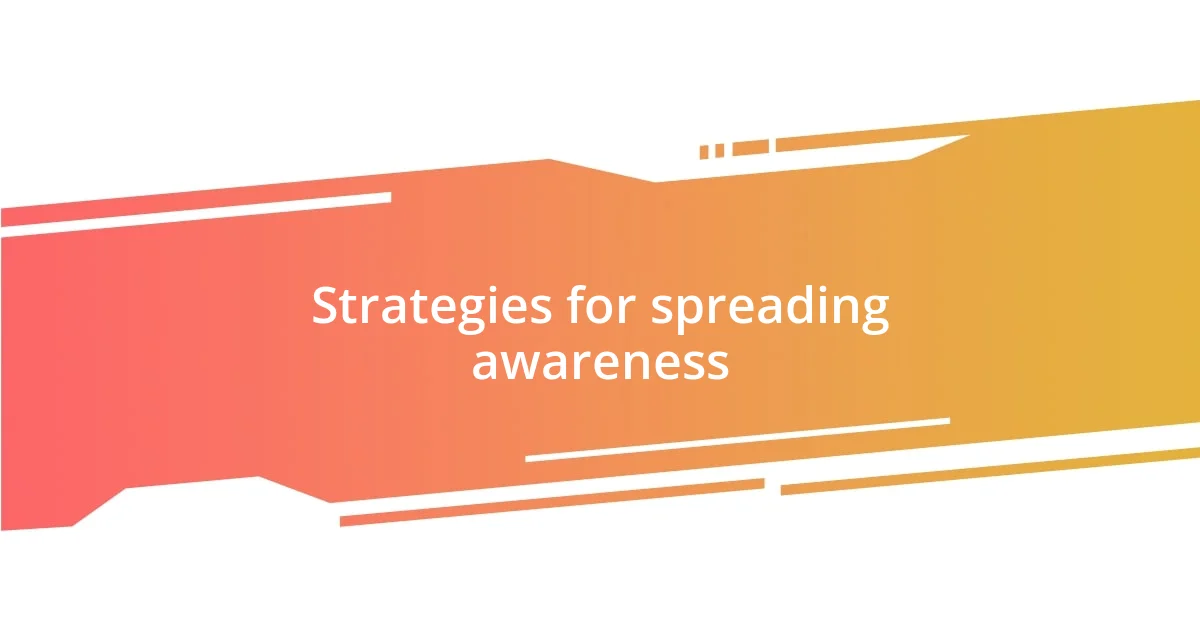
Strategies for spreading awareness
One strategy I’ve found particularly effective is collaborating with local schools to integrate disability awareness into their curricula. During a recent presentation I gave at a high school, I could see the students’ faces light up as they engaged with the material, asking thoughtful questions about the real-life implications of disabilities. It struck me how much awareness can grow when we meet young minds where they are. Wouldn’t it be amazing if we could instill empathy in the next generation from an early age?
Engaging with local businesses is another powerful strategy for spreading awareness. I remember volunteering with an initiative that helped train employees on best practices for service and accessibility. Witnessing the team’s transformation from indifference to genuine interest was inspiring. It made me realize that when businesses embrace training, they don’t just comply with regulations—they foster a culture of respect that can permeate their entire community. Isn’t it heartening to think about how a corporate mindset shift can lead to widespread change?
Lastly, hosting community events focused on arts and culture can be a dynamic way to promote awareness. At a recent art fair I attended, several artists with disabilities showcased their work, and the emotion in their creations drew people in. As I wandered through the exhibits, I couldn’t help but feel that art has a unique ability to transcend barriers. It begs the question: what if we all used our talents to highlight stories that deserve to be told? The possibilities for fostering awareness are endless when we think creatively.
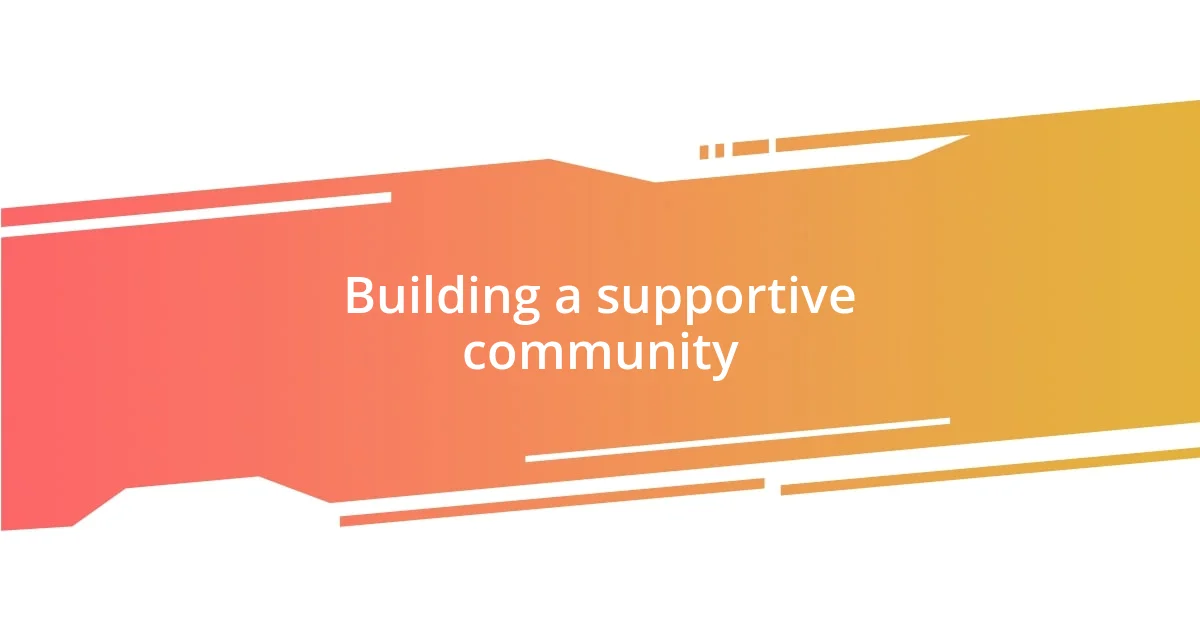
Building a supportive community
Creating a supportive community is essential for fostering disability awareness. I remember attending a community barbecue where one of the attendees shared her journey living with a disability. Watching the crowd lean in, captivated by her story, made me realize that when we provide a platform for individuals to share their experiences, we ignite empathy and understanding. How often do we miss these opportunities to connect over food and conversation?
I’ve also seen the magic of peer support groups firsthand. During a weekly meet-up I facilitated, participants shared their struggles, but they also celebrated their victories together. It was in that space that I learned that vulnerability breeds strength. The comfort of knowing that others face similar challenges creates a bond that is not easily broken. Isn’t it heartening to think that a simple gathering can transform lives?
Additionally, I’ve found that mentorship plays a crucial role in building this supportive framework. I once mentored a high school student with a disability, and guiding her through what seemed like insurmountable obstacles opened my eyes to the power of encouragement. Just knowing she could reach out anytime provided a solid foundation for her growth. Couldn’t we all benefit from a little more support in our lives?
